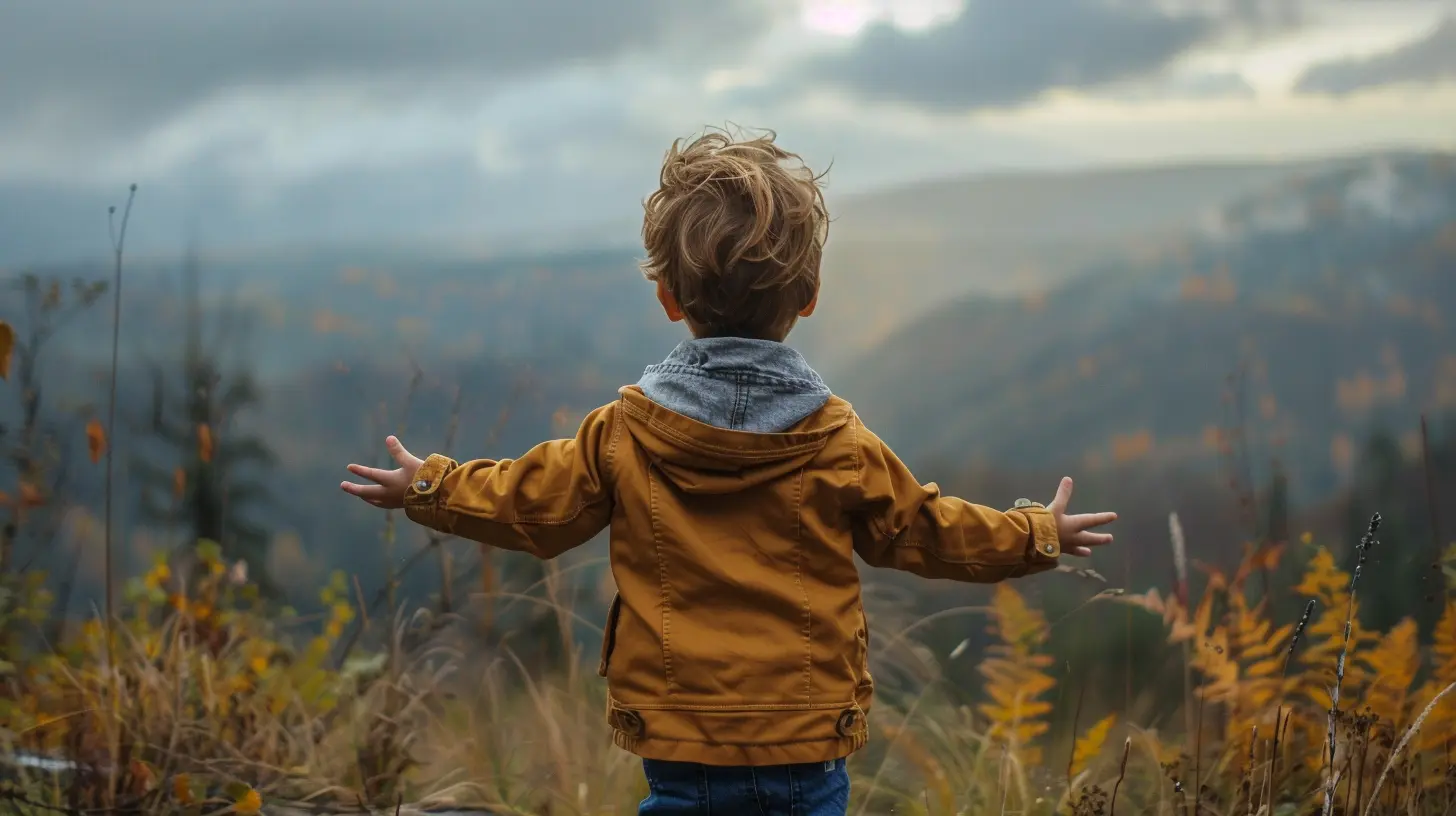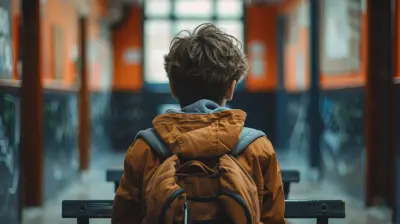17 February 2025
Let's face it, parenting is one wild ride! One minute your child is happily exploring their surroundings, and the next, they’re frozen solid, staring at some new, mysterious "monster" under the bed or that intimidating school project looming over them. As parents, it's natural to want to swoop in and take away their fears. But here's the tricky part: you can't always protect your little one from everything. What you can do is build their confidence so that they can face those fears head-on and grow into strong, courageous individuals.
But how? Read on to discover some tried and tested strategies for helping your child build confidence when facing new fears.

Understanding the Nature of Fear in Children
Before we dive deep into solutions, let’s first acknowledge what fear truly is. Think about it: fear is a natural response to the unknown. It’s our brain’s way of telling us, "Hey, something’s off here!" And for children, the world is full of new experiences. It's totally normal for them to feel scared.In fact, at different developmental stages, certain fears are practically universal. Think of toddlers trembling at the sight of a shadow, or a 10-year-old getting anxious about a test at school. It's important to differentiate between regular fears and those that are more persistent or debilitating.
Common Fears in Children at Various Ages
- Toddlers (1-3 years): Fear of loud noises, separation from parents, strangers, and things like the dark.- Preschoolers (3-5 years): Imaginary fears (monsters under the bed, ghosts), fears of being alone, and fear of being abandoned.
- School-aged children (6-12 years): Social fears (like fitting in at school), academic pressures, and more realistic fears like injury or illness.
Knowing these stages helps you anticipate what your child might be going through, allowing you to support them effectively.

Why Is Building Confidence Important?
Confidence is like a life jacket. When your child feels confident, they’re more likely to tackle challenges without being overwhelmed by fear. Building strong self-esteem early on not only helps them manage fears more effectively, but it also boosts resilience — their ability to bounce back from difficulties.Think of confidence as a muscle. The more your child exercises it, the stronger it becomes. When they know they can handle tough situations, they’ll be better equipped to deal with life's inevitable tests, be it a spelling bee or that huge, scary slide at the park.
But how do we build that resilience and confidence? Here are some practical strategies.

1. Acknowledge Their Fear and Validate Their Feelings
It’s easy to dismiss a child's fear, especially when it seems trivial to us. ("C'mon, you don’t have to be scared of the vacuum cleaner!") But for your child, that fear feels very real. It's essential to acknowledge their feelings. Let them know it's okay to be scared and that you're there to help.Instead of saying, "There's nothing to be scared of," try, "I can see that you're feeling scared, and that's okay. Let’s figure this out together."
Why This Works:
When you validate their emotions, you're giving them permission to feel. This alone can reduce anxiety. It also shows respect for their experience, fostering trust and connection between you and your child.
2. Break Down Fears Into Smaller Steps
Facing a big fear can feel overwhelming for anyone — especially a child. The key is to break the fear down into smaller, manageable steps.For example, if your child is terrified of swimming, start by simply letting them dip their toes in the water. Then, over time, they can work up to wading in, swimming with floaties, and finally, swimming without assistance. Each small victory will give them the confidence to tackle the next challenge.
Why This Works:
This technique, also known as “gradual exposure,” can help desensitize your child to their fear over time. Each little goal they achieve reinforces their ability to face a challenge. Plus, small wins create positive reinforcement, which builds even more confidence.3. Model Confident Behavior
Children are expert imitators (ever notice how they mimic your mannerisms or repeat what you say?). One of the best ways to help your child gain confidence is by setting an example. Show them how you tackle your own fears with confidence.Let’s say you’re afraid of heights, but you decide to take the family on a Ferris wheel ride anyway. You can explain, "I’m feeling a little scared of how high this Ferris wheel goes, but I know I can handle it. I’m going to be brave and give it a try." By doing so, you’re teaching them that facing fears is normal and possible.
Why This Works:
Children learn by watching. When they see you confronting your fears with courage, they’ll be more inclined to do the same. It teaches them that fear doesn't have to be paralyzing and that action is the key to overcoming it.4. Encourage Problem-Solving and Independence
Confidence grows when children feel capable. Encourage your child to think through how they can solve the problems related to their fear. If your child is scared of starting a new school, ask them, "What would help you feel better about going?" Even if their solutions seem simple, allowing them to brainstorm fosters independence and gives them a sense of control.Sometimes, all they need is a plan. Maybe, they decide to bring a favorite toy or ask a friend to walk with them on the first day. These small actions can help them feel more in control of new, scary situations.
Why This Works:
When your child takes the lead in finding solutions, it empowers them. They’ll start seeing themselves as capable of overcoming challenges — rather than someone dependent on others to fix problems.5. Praise Effort, Not Just Success
Let’s be real: not every attempt at facing a fear is going to be an instant success. Sometimes, your child will try and fail. You might feel compelled to jump in with phrases like, "Don’t worry, better luck next time!" But that's not necessarily the way to go.Instead, make it a point to praise their effort. "I’m so proud of you for trying. It takes a lot of courage to face something that scares you." The act of trying deserves recognition, regardless of the outcome.
Why This Works:
Praising effort rather than outcome shifts the focus away from failure. It teaches your child that success isn't always about achieving the end goal but about learning and growing along the way. This encourages persistence and resilience — essential life skills for overcoming fear.6. Create Positive Experiences
Sometimes, kids need to replace fear-driven experiences with positive ones. If your child fears dogs due to a bad encounter, take gradual steps to expose them to friendly, calm dogs. Start by watching dogs from a distance and praising their bravery. Eventually, you can work up to meeting a gentle dog in a controlled setting.Building on positive associations is key. It rewires their brain to see the once-feared object in a new, more favorable light.
Why This Works:
Kinder, more controlled experiences lessen the intensity of fear. The goal is to create a balance so that the child’s positive interactions outweigh the negative ones, helping them learn that their new fears are manageable.7. Develop a Routine for Facing Fears
Children thrive on routine. Establish a routine for how your child approaches fears. Maybe you have a specific "calm-down corner" where they can go when they feel overwhelmed. Or perhaps you create a mantra or saying that they can repeat to themselves when they feel scared, like "I can do hard things."This routine becomes their safety net — something they can rely on when big emotions threaten to overwhelm them.
Why This Works:
Routines offer structure and predictability in the chaotic world of emotions. By sticking to familiar routines, children know what to expect, which calms their nerves and helps them tackle challenges more confidently.8. Recognize When Professional Help Is Needed
Sometimes, despite your best efforts, your child’s fear may become debilitating. If their anxiety interferes with daily life, it might be time to consider professional guidance. Therapists specializing in child psychology can offer strategies that are specifically tailored to your child’s needs.Why This Works:
It’s essential to know when to ask for help. Professionals can provide targeted interventions that go beyond what you can do at home. It’s not a sign of failure, but rather a proactive step toward helping your child realize their full potential.Conclusion: Building Confidence Takes Time
Remember — building your child’s confidence in the face of fear is a journey. There will be ups and downs, but with patience, love, and the right strategy, your child will learn to face their fears and emerge stronger on the other side.You won’t always be able to remove every scary thing in your child’s path. But by fostering confidence, you’re providing them with a powerful tool they’ll carry with them for life. So, when the next fear comes along — whether it’s a stormy night or a big school presentation — your child will be ready to tackle it with courage and determination.









Martha Kirkland
Building confidence in children takes patience and understanding. Celebrate their small victories, listen to their fears, and provide gentle encouragement as they explore new challenges.
March 25, 2025 at 6:05 PM